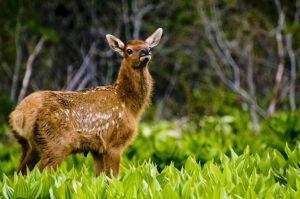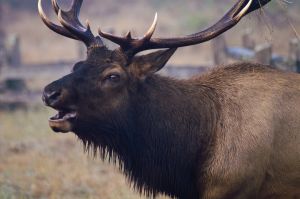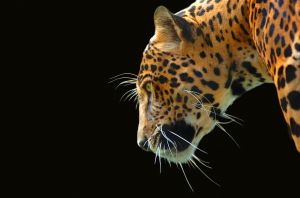Elk
Also known as wapiti, the elk is one of the largest deer species in the world. It is also one of the largest mammals in eastern Asia and North America. As part of the deer family, only the moose is larger the sambar deer can rival the elk in size. Elks are almost identical to the European red deer, and as a result, it was believed that the elk was a subspecies of the red deer. However, mitochondrial DNA evidence from 2004 proves that they are actually a different species. In fact, it is more closely related to a Therold’s deer and a sika deer compared to a red deer.
There are several elk subspecies, although some taxonomists consider them as different races or ecotypes of the same species – meaning that they have adapted to their local environments via minor changes in behaviour and appearance. There are 6 subspecies from North America, and 4 from Asia. These 10 subspecies vary from each other in antler size and shape, body size, colouring, and even mating behaviour. Only 4 out of 6 elk species currently remain in modern times. These include the Roosevelt, Tule, Rocky Mountain, and the Manitoban. The Eastern Elk and Mirriam’s Elk have been extinct for at least a century.
The four Asian elk subspecies include the Altai Wapiti and the Tianshan Wapiti. There are also two distinct subspecies found in Korea and China, called the Manchurian wapiti and the Alashan wapitis. The difference between the two are that the Manchurian wapiti is darker and redder in colour than other ppoulations. The Alashan wapiti is found in north central China, and is the smallest of all subspecies. It is also the least studied and has the lightest colouration.
Elk females weigh 225 kg on average, and stand at 1.3 m at the shoulder. They are 2 metres long from nose to tail. Bulls are 40% larger than cows at maturity, and weigh an average of 320 kg and stand at 1.5 m at the sholder. They also average 2.5 metres in length from nose to tail. The largest of the elk subspecies is the Roosevelt elk, which is found west of the Cascade range, which is found in British Columbia, Washington, Oregon, and California. They have also been reintroduced into Alaska, where the largest male is estimated to weigh up to 600 kg.
Only the bulls have antlers. The antlers start growing in the spring time, and are shed during the winter. The largest antlers are estimated to be about 1.2 metres long, and weigh 18 kilograms. Antlers are made out of bone, and have a growth rate of approximately 2.5 cm (1 inch) per day. While the antlers are actively growing, they are covered with a soft layer of velvet, which is a highly vascularised skin. During the summer, the velvet is shed when the antlers have become fully developed.





hello friends its my favorite pictures.